When a Race Becomes a Rescue
Published on June 1st, 2017
The second year of the California Offshore Race Week is underway, providing a schedule of races on May 27 to June 3 that carries the fleet from Northern California to Southern California with stops in Monterey and Santa Barbara.
After the Spinnaker Cup took the fleet on the 88 nm downhill slide from San Francisco to Monterey (see story), the 204 nm Coastal Cup from Monterey to Santa Barbara proved to be too eventful for two of the entries.
At about 35nm from Morro Bay, the Gunboat 62 Chim Chim broke a rudder and the Moore 24 Snafu was dismasted (see story). While Chim Chim still had their other rudder to provide steerage, the situation with Snafu deteriorated, requiring a helicopter to be dispatched to airlift the crew off the damaged boat.
While the fleet is now on the final stage, the 245 nm SOCAL 300 from Santa Barbara to San Diego, here’s the Snafu rescue story courtesy of Erik Simonson and Pressure-drop.us.
“We were in some deep sh#t,” says Gilles Combrisson, who was sailing doublehanded on the Moore 24 Snafu with Karl Robrock. “We got into it early, just south of Point Sur, with winds in the med to high 20’s with big puffs in the 30’s. It was grungy.”
The pair are no slouches to offshore racing in Moore 24’s and both have logged thousands of miles on Snafu, including winning the Iwi Double Handed division in the Pac Cup in 2014. However the sea state with a building short period NW swell in the 10-14 range had coupled with a southern swell that in turn created a reverberating swell bouncing back off the cliff walls of Big Sur, creating a confused sea of epic proportions.
The pair had already reduced sail area, downsizing to a shy kite, then just a poled out jib, from the A 2.5 they began the day with. The main was also already fully reefed, yet the pressure zone they found themselves in was relentless.
“We were hitting high teens and maxed out at 20.3knots at one point,” Gilles recalled. “We had crashed hard a few times with the shy kite up and had decided to go with just the jib poled out, it is almost as effective as the shy kite, except the lulls are far greater and the helm isn’t as balanced, it goes from weather helm to lee helm really fast.”
Darkness was approaching and the guys had gone in to their one hour on, one hour off routine to try and preserve energy. Gilles had just returned to watch from his hour off and was still groggy. The two had jibed the boat onto port tack and were on a rhumb line down the coast averaging 15 knots.
“We had gotten in to a rather large wave train,” Gilles says. “And the troughs were scary big, so big that during a couple sets we would get flung down the faces, the boat on its side and it felt like we were foiling on the keel. Then we would crash into the bottom and the bow would auger in… Never felt that before on a Moore.”
In retrospect, Gilles believes that they probably had too much weight forward, something they hadn’t tended to as the wind had come up so quickly and they had been busy with the boat handling.
And then the unimaginable happened. Karl was up front on the bow, and the boat rounded up and got pinned. Immediately they were slammed by a huge wave and the mast folded over. “It was surreal,” recalls Gilles. “I could not believe what I was seeing, or couldn’t see, and that was Karl. My biggest phobia with these boats is losing someone overboard in conditions like this. It’s pretty much game over.”
Gilles called out into the darkness, “KARL, YOU OKAY?”
Miraculously, when the rig came down, the main impact went to the front pulpit and Karl had gotten tossed into the lifelines and remained on board, relatively unharmed aside from some scrapes and bruises.
The first order of business was to call for help. A frantic search for the handheld VHF yielded nothing. With the mast top antennae now at sea level, and the communication cable wound up in the pieces of the broken mast, the two realized their lifeline to the outside world was perilously near evaporating and they put out a pan-pan with the mounted unit.
There was a huge sigh of relief when their signal was received by USCG Station Morro Bay as well with three boats in the vicinity, Ray Paul’s Swan 53 Blue, which was some 15 miles further south, James Goldbergs J/109 Junkyard Dog, and Rodney Pimentel’s Cal 40 Azure.
With the USCG now coordinating communications and directing traffic, Gilles and Karl did their best to clean up the mess. “The main was pretty much ensnared in the mast and wasn’t coming out anytime soon, so we did our best to get as much of the rigging and sail out of the water and lash it down,” Gilles noted. “The seas and wind were still gnarly and it was all you could do to stay on board when getting tossed about.”
On board Azure, EYC’s Commodore Jim Vickers sprung into action. “We were 6 miles N-NE of them and locked onto their DSC signal. We dropped the jib and went to just the main and changed course. Seas were really crappy and with no lights on their boat we could not spot them”.
Communicating with Station Morro Bay, they got a message to Snafu to fire a signal parachute flare. “It was a thing of beauty,” says Vickers. “It really lit up the sky and for a brief while we could see them plain as day.” Still it took Azure another half hour to get to them. Jim Goldberg and crew on Junkyard Dog arrived a bit earlier and were on standby when Azure arrived.
“The guys on Azure are rockstars and the experience on that boat was obvious as soon as they showed up,” said Jim. “A few of our crew were sea sick from the upwind, up-swell motoring so we were very fortunate to have the help and experience of team Azure close by. Their communications with the coasties was I’m sure much more polished and helpful than ours under those conditions!”
The Coasties would arrive a couple hours and a half later, bashing their way through the dark all the way from Morro Bay.
They would conduct their survey, ask the questions that needed to be asked and assess the situation. Shortly after midnight they released Azure and Junkyard Dog.
The USCG’s primary role in these situations is the preservation of life. The possibility of a tow were acknowledged but accessing the situation they deemed it too dangerous. The Patrol boat agreed to stay on station until daylight, and Karl and Gilles retreated below to try and warm up. The boat had remained on port tack through the incident, and with the lashed sail/mast mess on starboard side, the rudder lashed to starboard, she was sort of hoved to, and making 1.2 knots towards Morro Bay.
“I was freezing, my hands were numb,” recalls Gilles. “We both needed some shut eye, but getting tossed about in those conditions was really uncomfortable, but at least we had eyes out looking after us, so the fear of getting run over by a freighter was reduced.”
Dawn would break and a second USCG vessel would arrive on the scene. A daylight evaluation would ensue and then it came down to brass tacks. The USCG determined that towing the vessel in was still off the table, as was the plan to have the crew jumping in to the water to swim over to rescue boat. Even the option of Snafu inflating their raft and being pulled over was discussed but deemed unsafe. The helo option was decided upon.
The original plan was to have the chopper lower down a diver directly to the boat, but that was scuttled due to fear the rig and sail might get blown about in the prop wash.
“You are going to need to dive in the water,” Gilles reflects. Teeth still chattering from the cold night, he was the first one in. He had left all his possessions aside from phone, car keys and wallet behind, but now his auto-inflation lifejacket failing to auto inflate.
“I was now hyperventilating and having a hard time in the waves not swallowing water,” recalled Gilles. “The diver swam a body crate over to me and had me climb in, and then gave me some specific instructions, but my mind was not functioning and I couldn’t really comprehend his words. It wasn’t until my hands were banging on the side of the helo that his speech about keeping hands inside the basket made sense.”
Karl would be lifted next and once both were aboard, given blankets and situated in the back of the copter, they started bleeding their Musto foulies, which seem to hold water in as well as keep water in. ” Must have been two gallons each,” Gilles laughs.
As they peered out the helo window, the two saw Snafu slowly disappear from view, and as they climbed through the clouds and into bright sunshine, the irony of the situation and the boats name was not lost. “We had just abandoned our boat, something we thought we would never do,” shared Gilles. “But we were safe. And headed home.”
The guys were delivered to San Louis Obispo Medical Center and met by a team of EMT’s and firefighters who greeted them with open arms. “They went above and beyond, provided us with hot showers, clean warm dry clothes and even rinsed and dried our clothes for us, then gave us hot coffee and the best breakfast burritos we have ever had,” said Gilles. “Really great guys!”
Back on dry land, the news had already begun to spread of the Snafu’s dire situation, and members of the Moore 24 family had taken some initiative to assist. Michael Brink of SLO Tours was notified and came to the rescue. Michael was still on the road, returning from a weekend in San Diego when he got the call.
“I was in Santa Barbara headed north, so I gave them directions to my launch in Morro Bay and met them about two hours later,” Mike said. Karl’s Mom had volunteered to bring the trailer down to Santa Barbara, but diverted to Morro Bay when she heard the news from Karl of the new plans. Michael, Karl and Gilles would hop in Michael’s 28-foot aluminum RIB and charge out to the boat, still waddling towards the shore, all on her own.
“It took nearly two hours of bashing to get to her, just 12 miles out,” Mike mentions. “But only 1/2 as much time coming back.”
It took some adjusting and a 60-foot rode, but they got the boat and rode adjusted, and with Karl back at the helm found the sweet spot where Snafu could surf along quite nicely at 12-15 knots.
The boat is back home now, a bit bedraggled from the wear and tear. It appears she will enjoy some time off as Karl enters a new phase in life: fatherhood! Yes the Robrocks are expecting a new bundle of joy in the near future, joining the Combrisson’s who are also parents to a future Moore 24 superstar. “I’m 44 and feeling it,” says Gilles “My muscles ache sooner and the ache lasts longer anymore, the circulation isn’t quite what it used to be. I’m looking forward to this next chapter.”


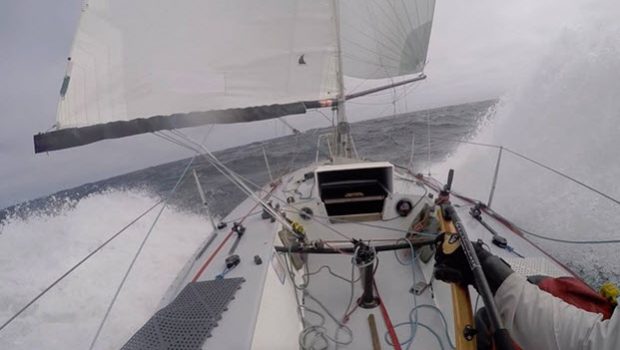

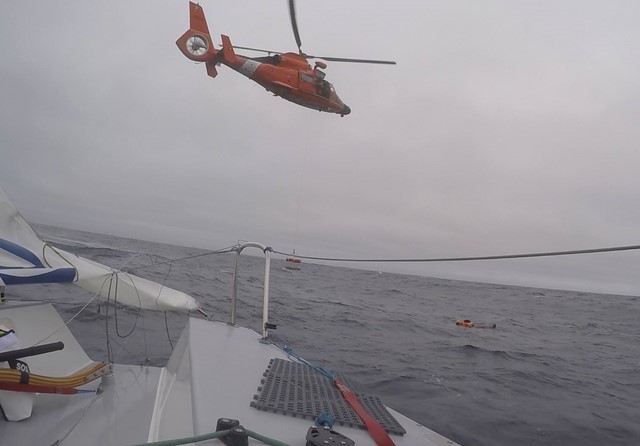
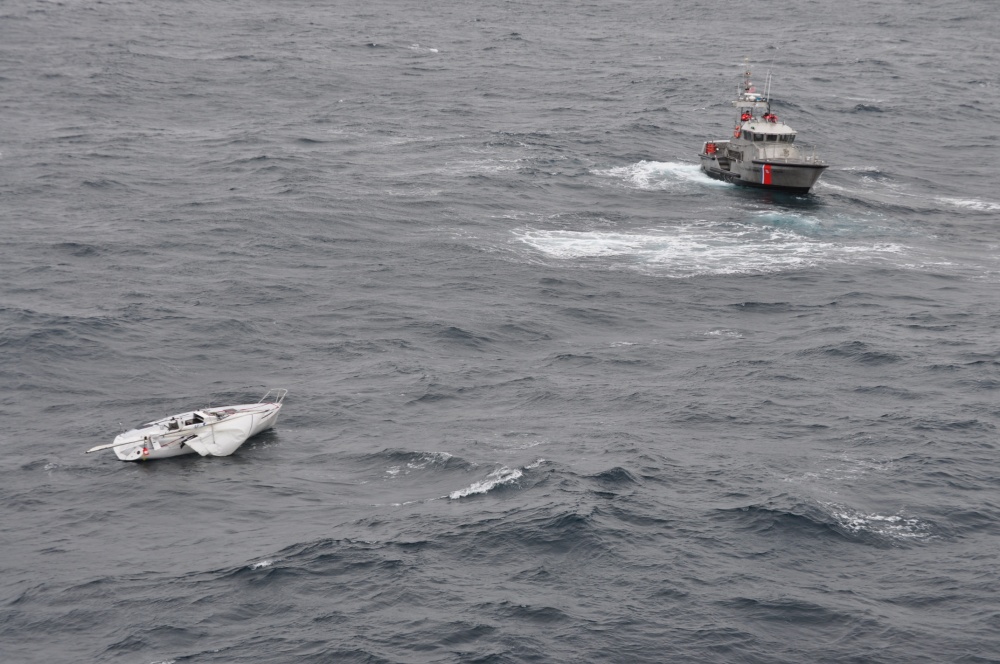
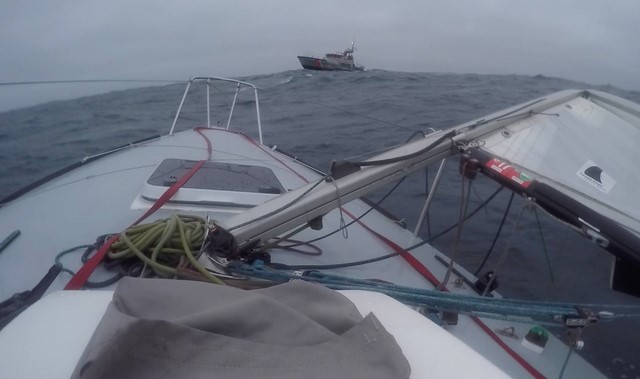
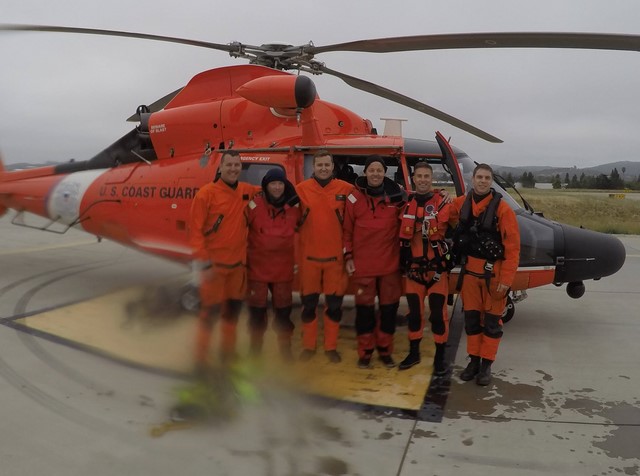


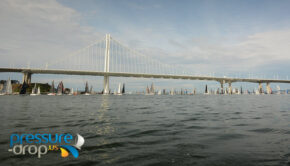
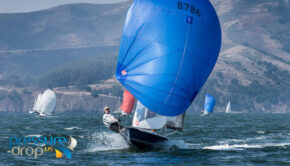
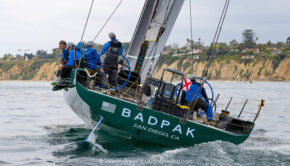
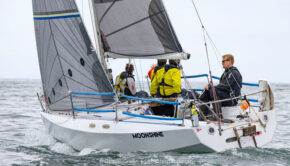
 We’ll keep your information safe.
We’ll keep your information safe.